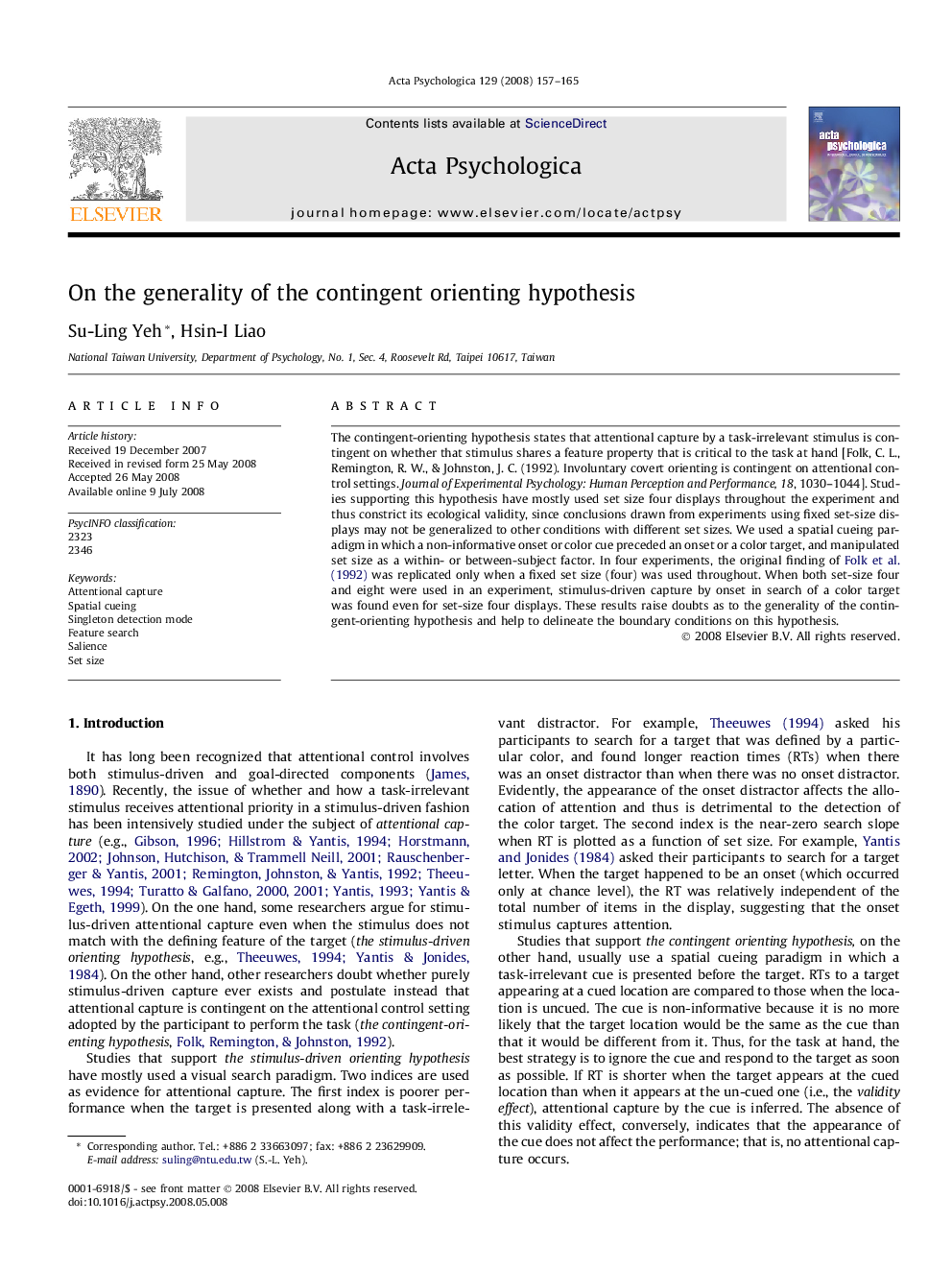| Article ID | Journal | Published Year | Pages | File Type |
|---|---|---|---|---|
| 920407 | Acta Psychologica | 2008 | 9 Pages |
The contingent-orienting hypothesis states that attentional capture by a task-irrelevant stimulus is contingent on whether that stimulus shares a feature property that is critical to the task at hand [Folk, C. L., Remington, R. W., & Johnston, J. C. (1992). Involuntary covert orienting is contingent on attentional control settings. Journal of Experimental Psychology: Human Perception and Performance, 18, 1030–1044]. Studies supporting this hypothesis have mostly used set size four displays throughout the experiment and thus constrict its ecological validity, since conclusions drawn from experiments using fixed set-size displays may not be generalized to other conditions with different set sizes. We used a spatial cueing paradigm in which a non-informative onset or color cue preceded an onset or a color target, and manipulated set size as a within- or between-subject factor. In four experiments, the original finding of Folk et al. (1992) was replicated only when a fixed set size (four) was used throughout. When both set-size four and eight were used in an experiment, stimulus-driven capture by onset in search of a color target was found even for set-size four displays. These results raise doubts as to the generality of the contingent-orienting hypothesis and help to delineate the boundary conditions on this hypothesis.
